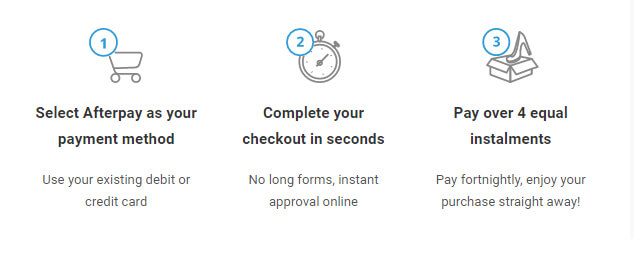Things You Need To Know About Bark Collars
Humans dub dogs as man's best friend, and we have tons of reasons to back this up. Most of us even indulge our dogs in various things, and that behaviour usually becomes a nuisance at times. One prime example of this is their barking patterns.
With that in mind, many people run towards the safety of training their dogs and buying all sorts of stuff that they think would be helpful on their journey. On the other hand, some people like to keep it natural, and they steer away from the use of any unfamiliar tools.
When we talk about those kinds of people, there's only one dog training product out there that sparks considerable attention - Bark Collars. Let's take an in-depth look at them and see if bark collars help or not.
Bark Collars
A Bark Collar is a type of training collar for dogs experiencing unwanted and uncontrollable barking issues. Bark collars steer dogs from their negative barking behaviours. There are different types of bark collars in the market today. Let's take a look at each of them.
Types of Bark Collars
-
Electronic Collars - Electronic collars are the most common type of bark collars for dogs out there in the market. Electronic or e-collars provide short static signals to our dogs to distract them and steer them away from any nuisance behaviour we are working on.
-
Citronella/Lemon Spray Collars - Spray collars are automatic dog bark collars that utilize sensors and spray a mist of citronella or lemon to control our dog's barking patterns. These sprays are safe for both dogs and humans. Not only that but the mists are also considered safe for the environment.
-
Vibration Collars - Like electronic and spray collars, vibration collars utilize built-in sensors that send pulses to control our dog's unwanted barking behaviour.
-
Ultrasonic Collars - Ultrasonic bark collars use microphones and vibration sensors and send out high-frequency sounds to our dogs to minimize any nuisance barking.
See the selection of bark Collars in The Dog Line and find what's suitable for your beloved dog.
Bark collars use different approaches to control our pet's unwanted behaviour, and all of them provide a significant promise of effectiveness. Now that we know the types of available bark collars in the market. Let's see how bark collars tie up with our dog training.
Basic Bar Collar Training
There are several variations of collars out there, but they all follow collar similar training guidelines- utilize a friendly and patient approach at all times.
Colin from the Dog Line shared his quick training guide on how he effectively cut down his dog's nuisance barking by 60%. Let's take a look at his program and how he does it.
-
Go for the Right Tool for the Job - Don't Settle for Cheap and Sketchy Training Products. Choose the proper dog training collar for your dog, and don't fall into the cheap promises. Going for safe and quality bark collars reduces any unnecessary risks involved with your dog's training.
-
Let Your Dog Get Used to Wearing the Collars - Let your dog get accustomed to the bark collar around their neck, but it is vital NOT to ACTIVATE it yet. Let your dog think the thing around their neck is just a regular collar.
-
Choose the Worst Barking Trigger for Your Dog - Take note of the worst barking trigger: passing cars, delivery men, and even the ring of a doorbell.
-
Control Your Dog in Training Using a Leash - Dogs would react to the first set of stimulation they'll get from their barking trigger. Control your pet using a dog harness or a second lead, but DON'T ATTACH THE LEASH DIRECTLY TO THE BARK COLLAR. Doing so might result in discomfort or unwanted tightening of the bark collar around your dog's neck.
-
Start Low - Most dog collars in the market today feature varying levels of correction. Start with the bare minimum and work your way up as you find the most suitable correction level for your dog.
-
Prepare Rewards When Your Dog's Barking Ceases - Providing rewards for your dog makes your dog's training journey easier and more enjoyable. Give them treats every time they control their nuisance behaviour, especially when the barking trigger is present. After all, rewards are reasonable measures for dogs to understand if they are doing the right thing.
The Dog Line provides a free training guide that comes with every purchase of bark collars. Follow a comprehensive program aimed explicitly for someone new to bark collars.
Dog Collar and Separation Anxiety
Separation anxiety is a common occurrence for domesticated dogs, but there's a gray area on how we can specifically tell if our beloved dogs have one. However, one thing is sure, dogs with this kind of condition cause a lot of stress for people around them.
By nature, dogs are social animals, and their genetics tells them that they are part of the pack. With that in mind, we can clearly see why they might experience a hard time coping up alone.
How To Deal With Your Dog's Separation Anxiety
-
Utilize Diversion - Entertainment toys provide a huge distraction for our dogs, which can significantly minimize the unwanted effects of separation anxiety. The dog line has a wide selection of dog toys suitable for your canine needs.
-
Boredom and Not Feeling Secured - In almost all instances, separation anxiety's root cause points down to boredom and not feeling secure enough. Spend extra time with your dog and train them to manage their separation anxiety.
-
Dog Training - Dog training significantly provides a considerable boost to control and tone down your dog's separation anxiety. Utilize available tools such as bark collars to help you reach your goals.
 The Dogline
The Dogline


















